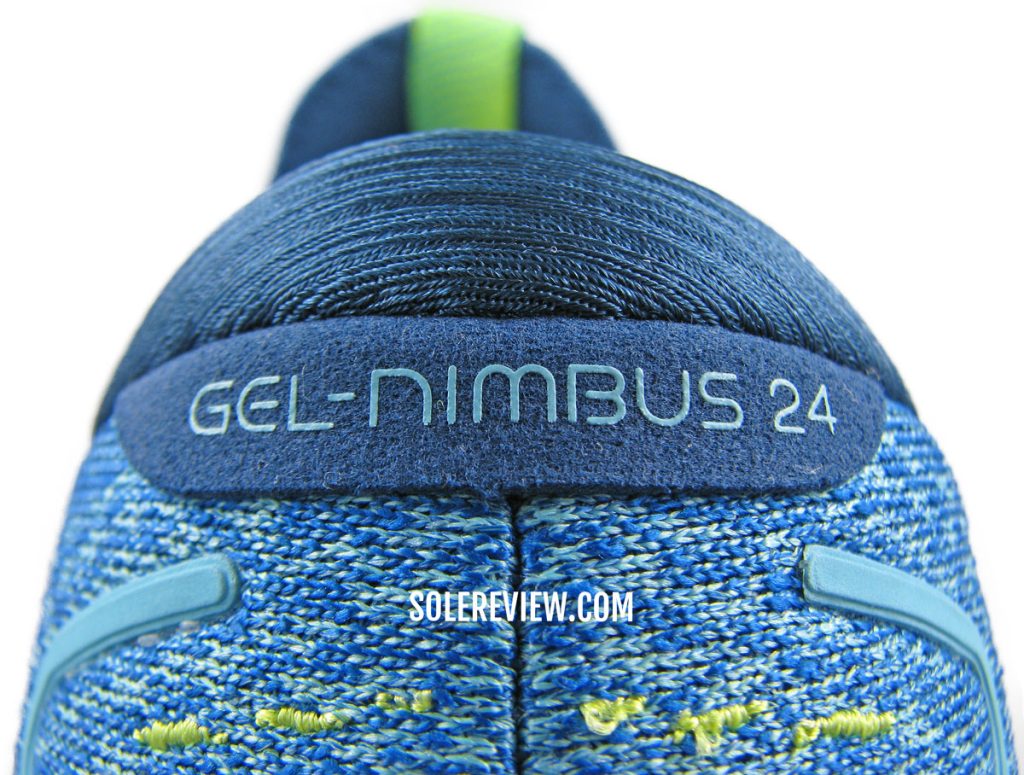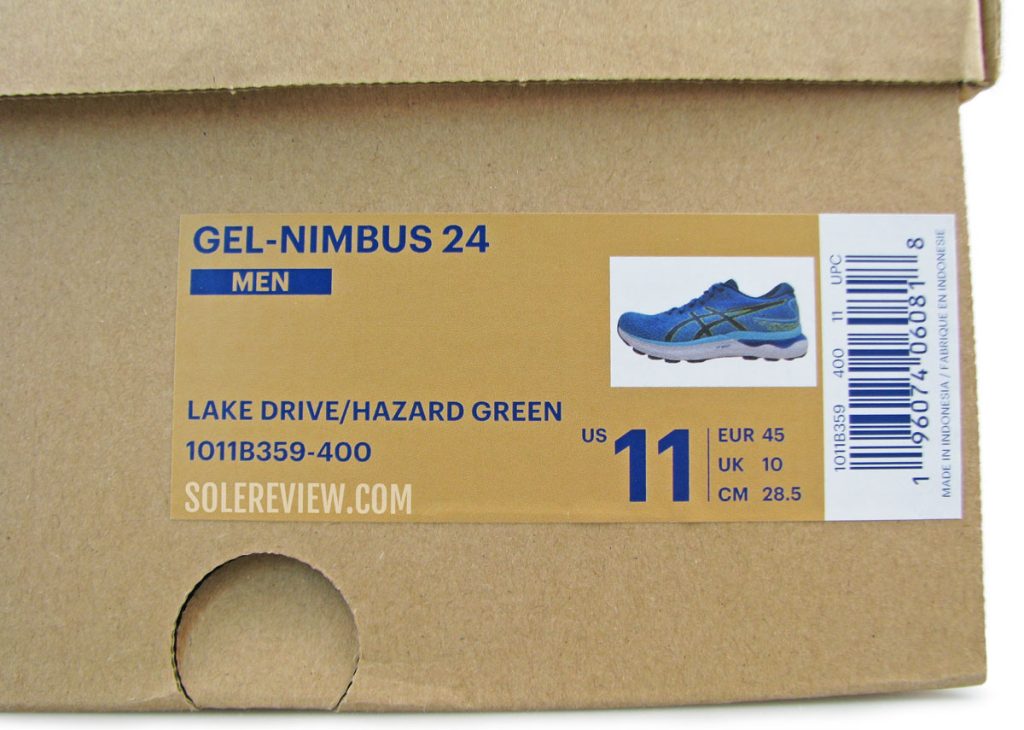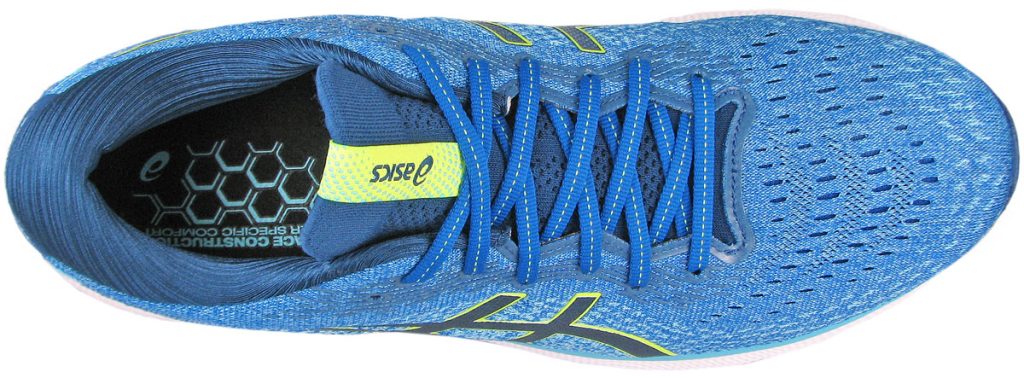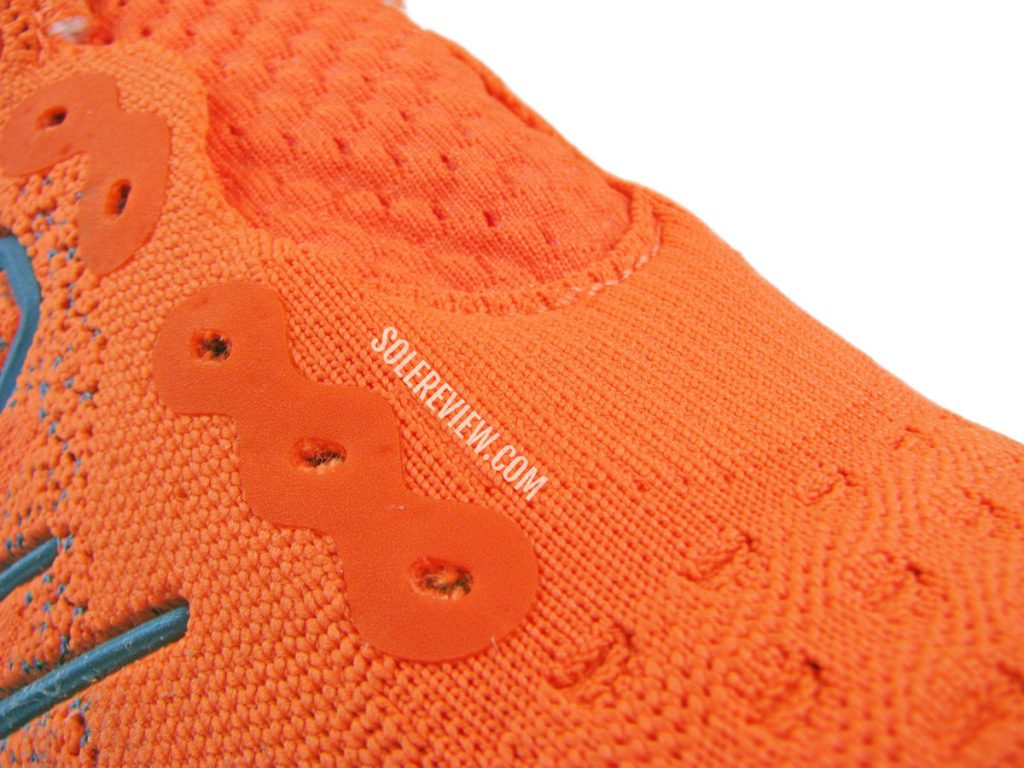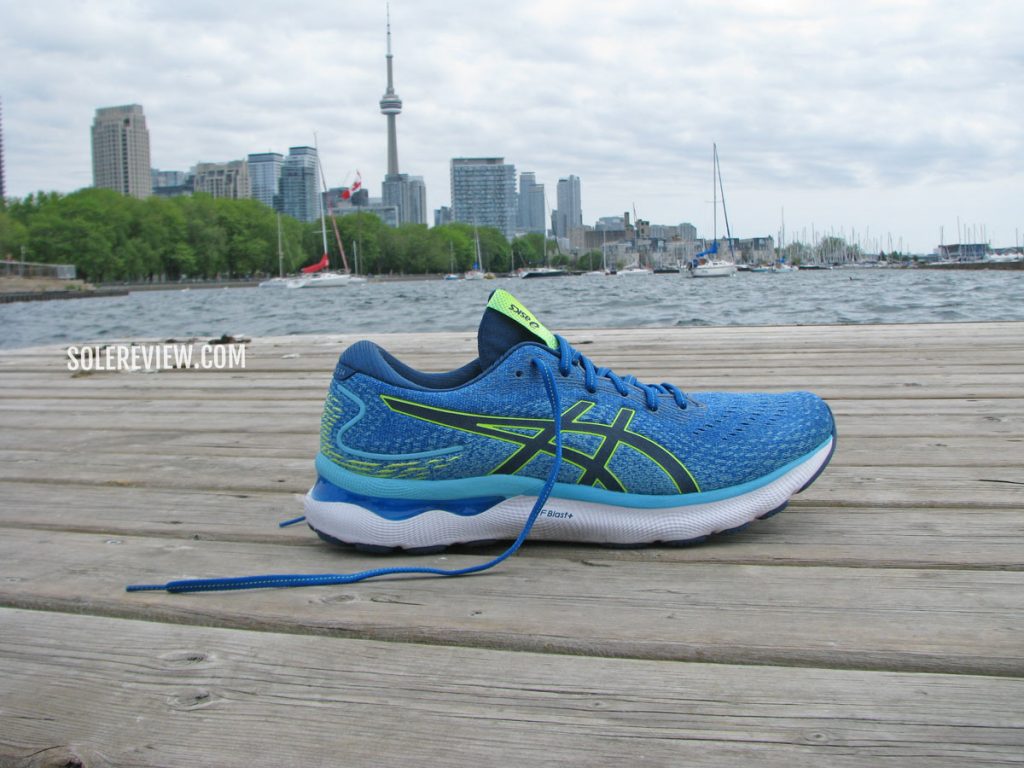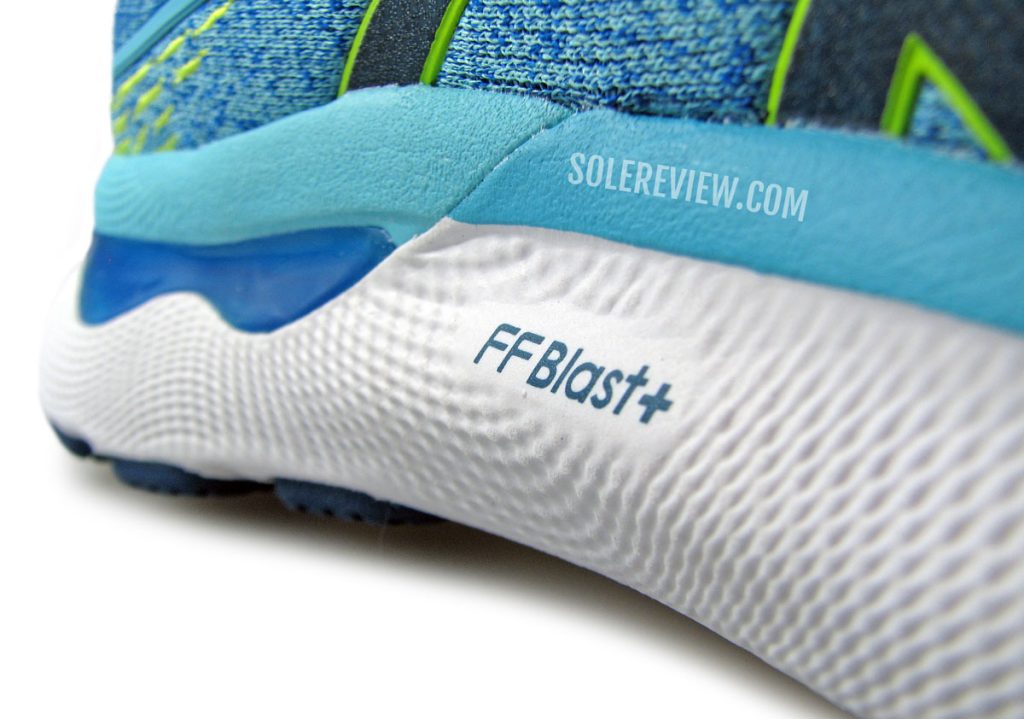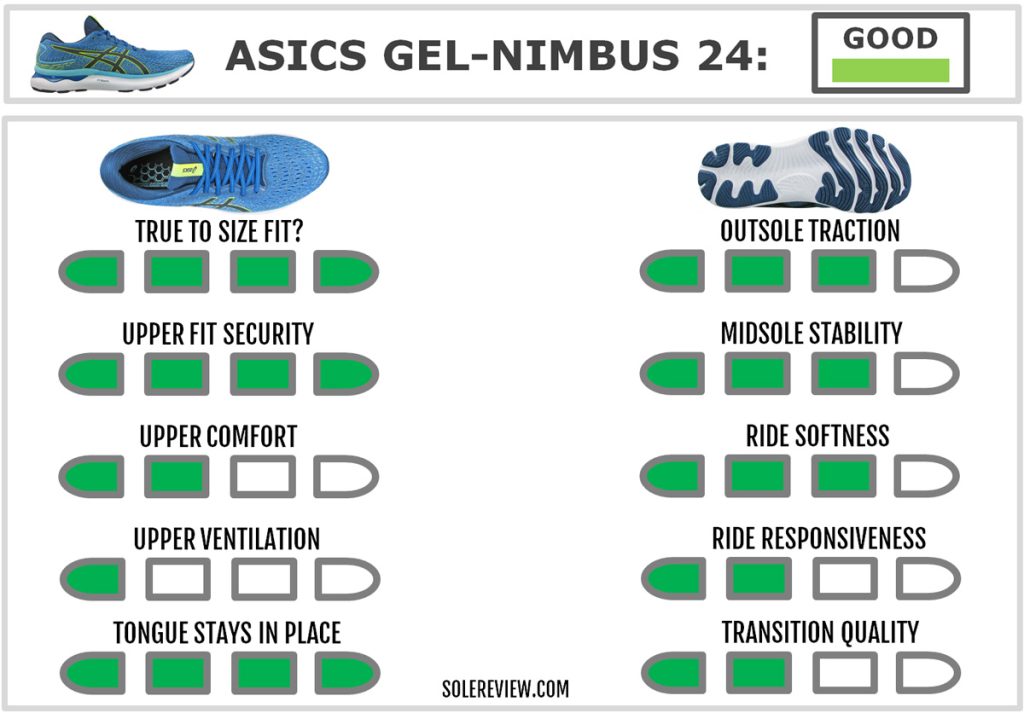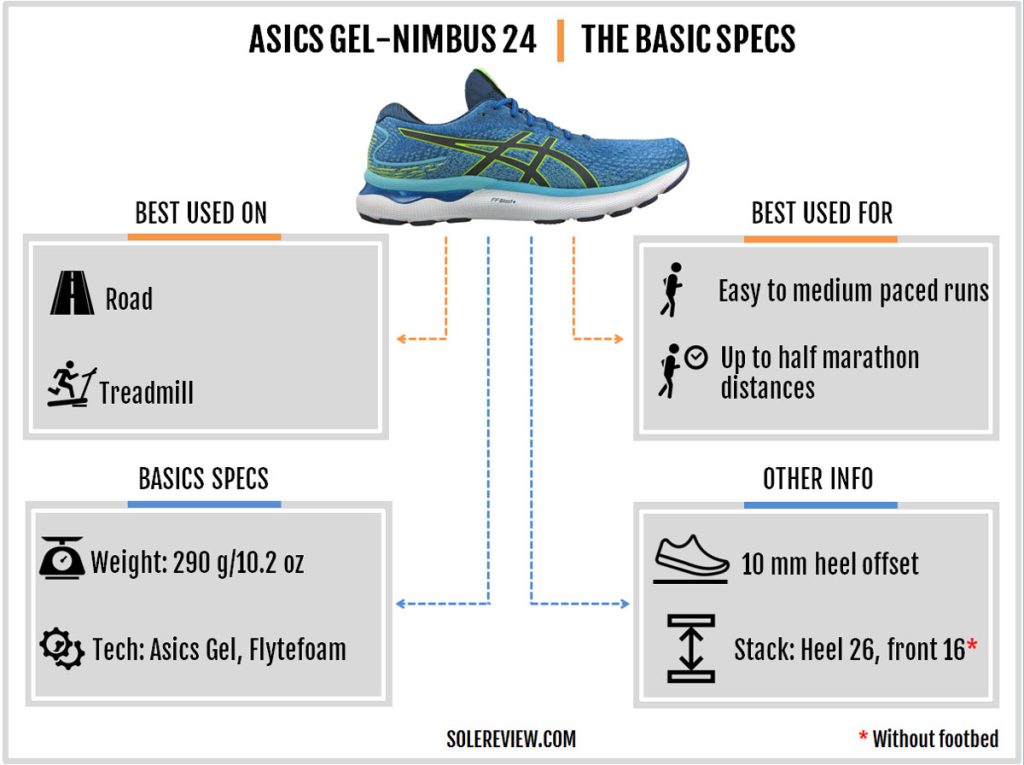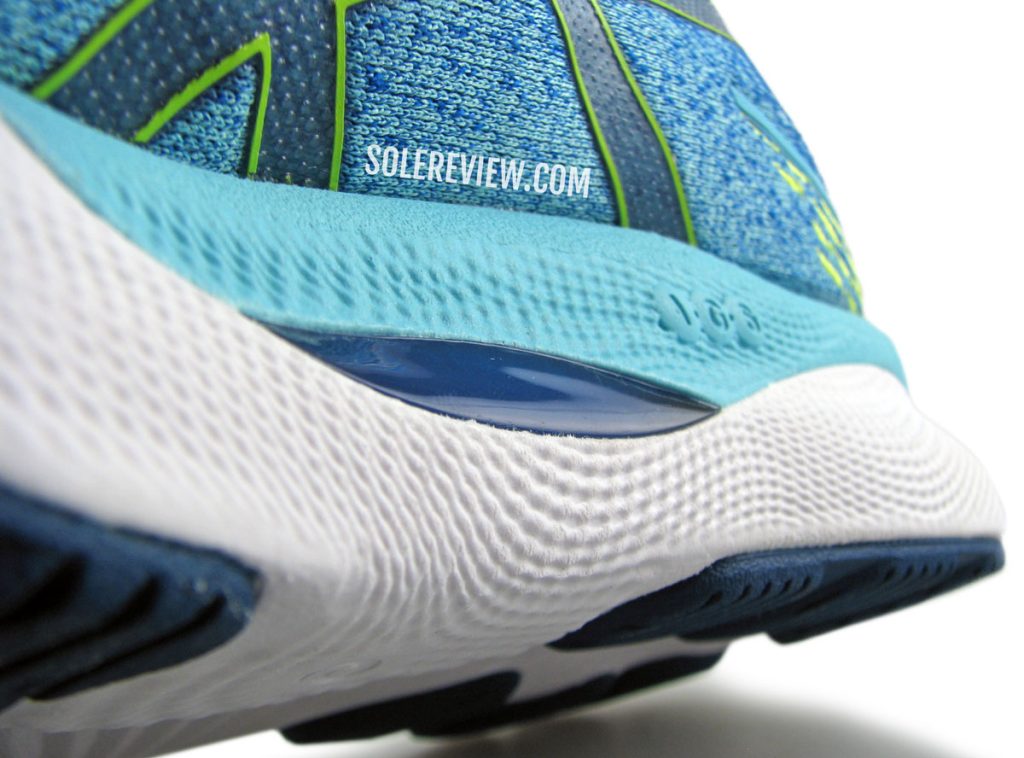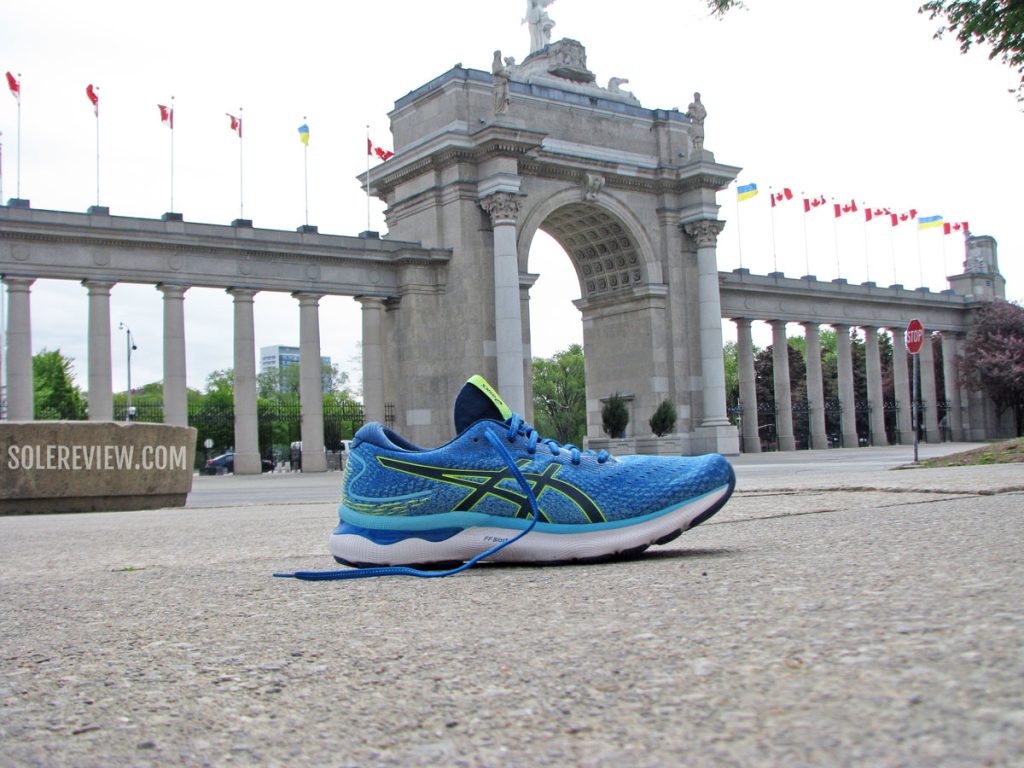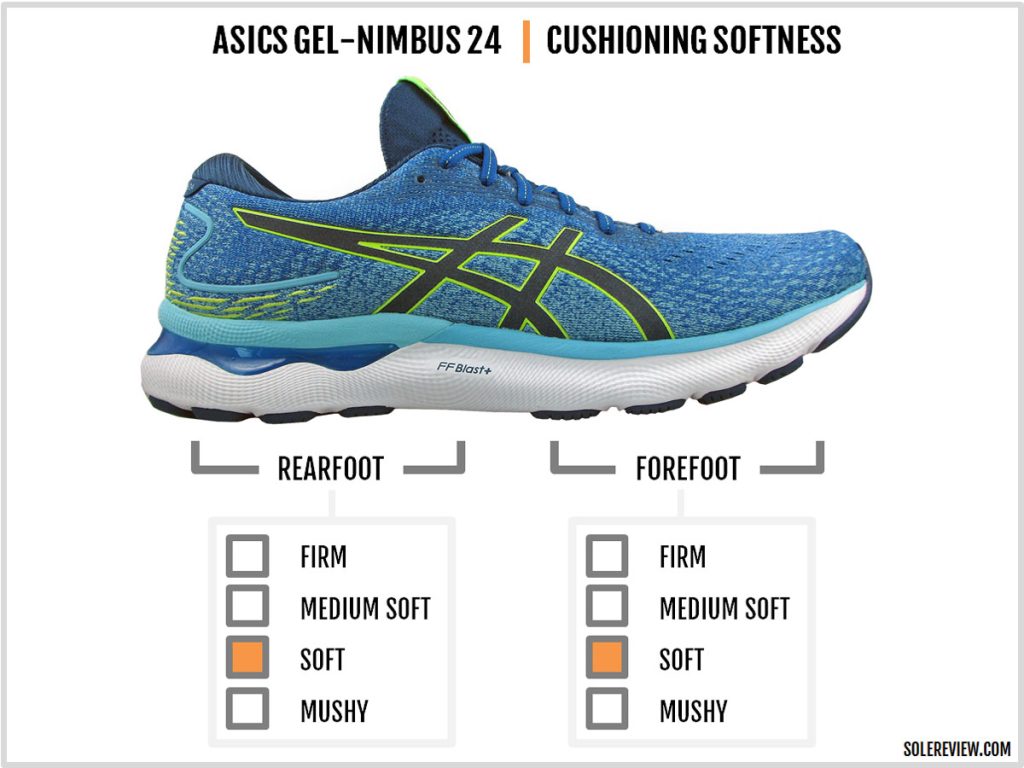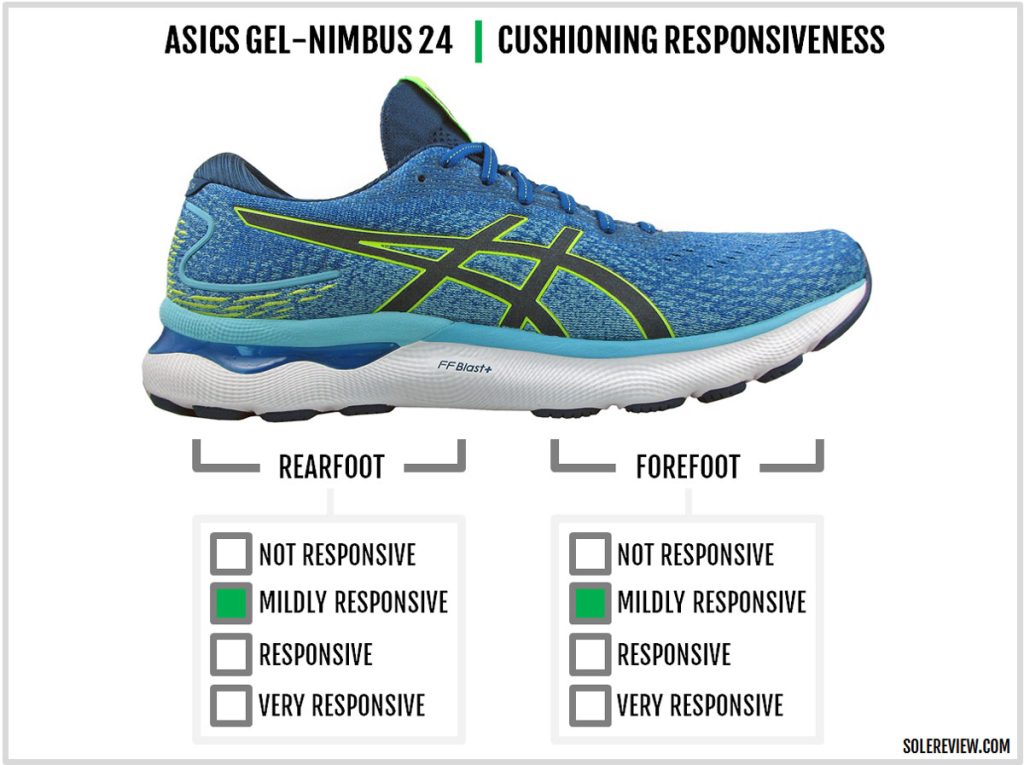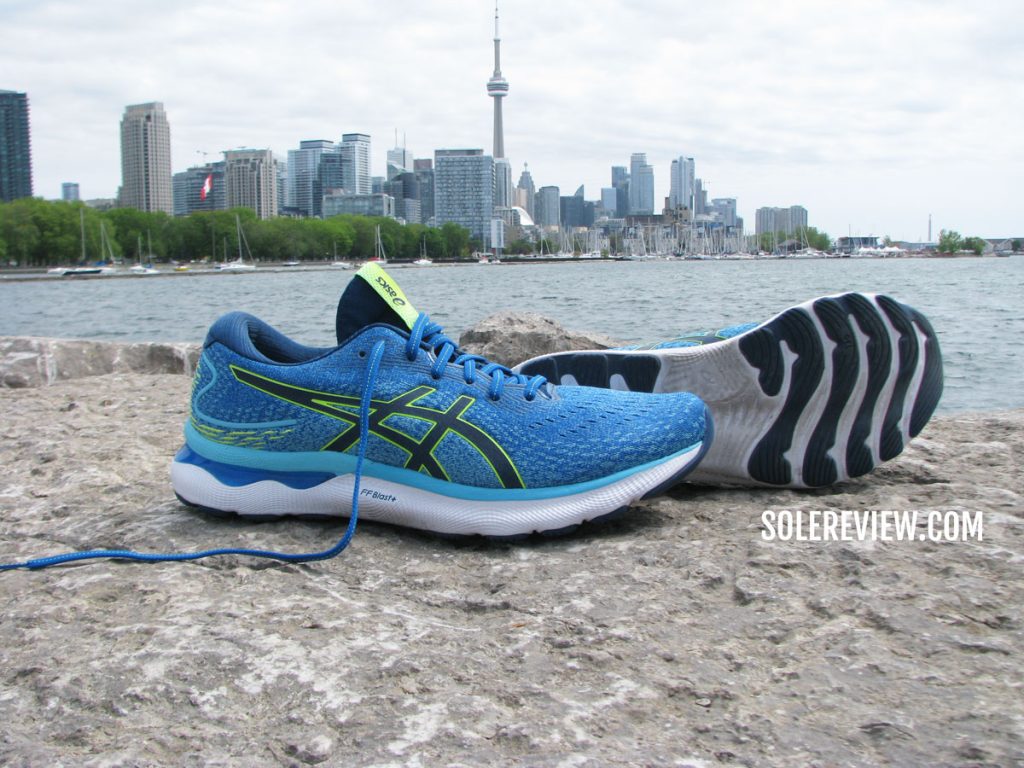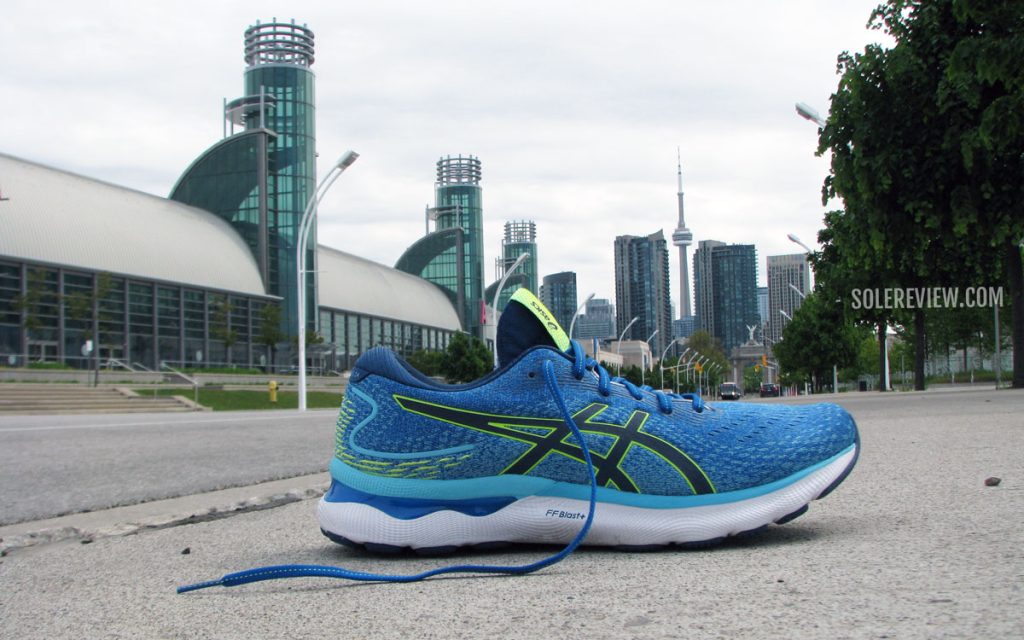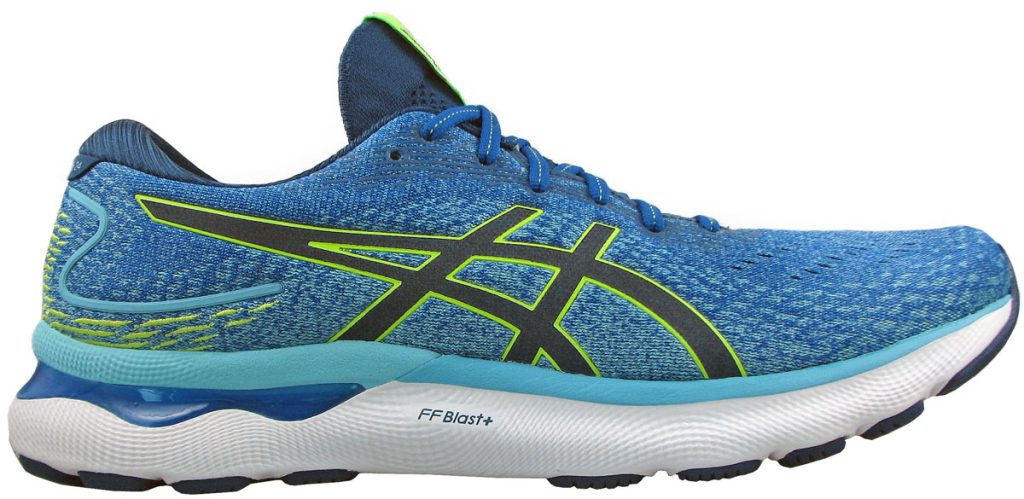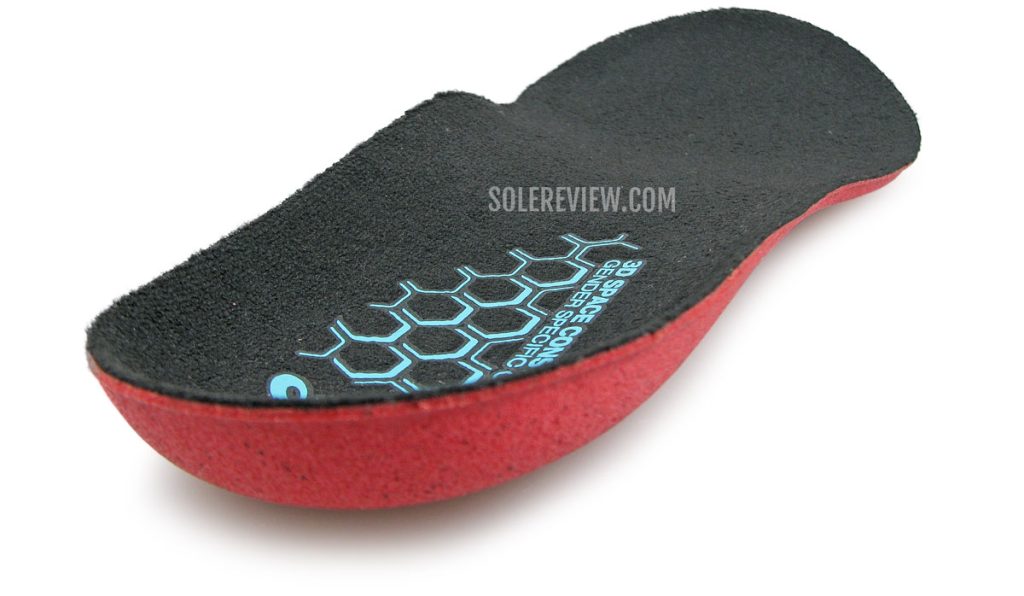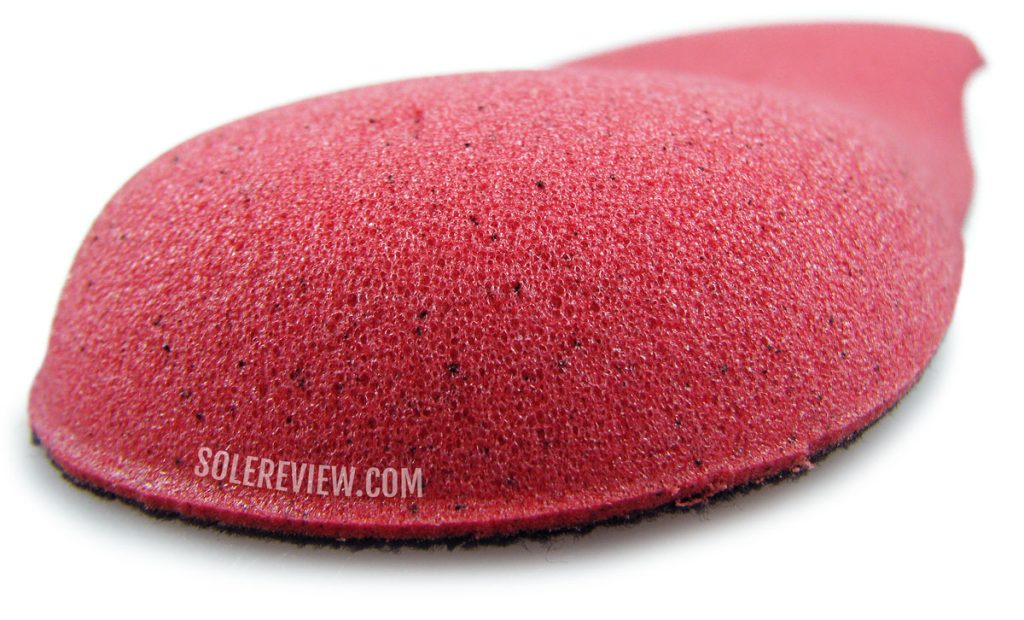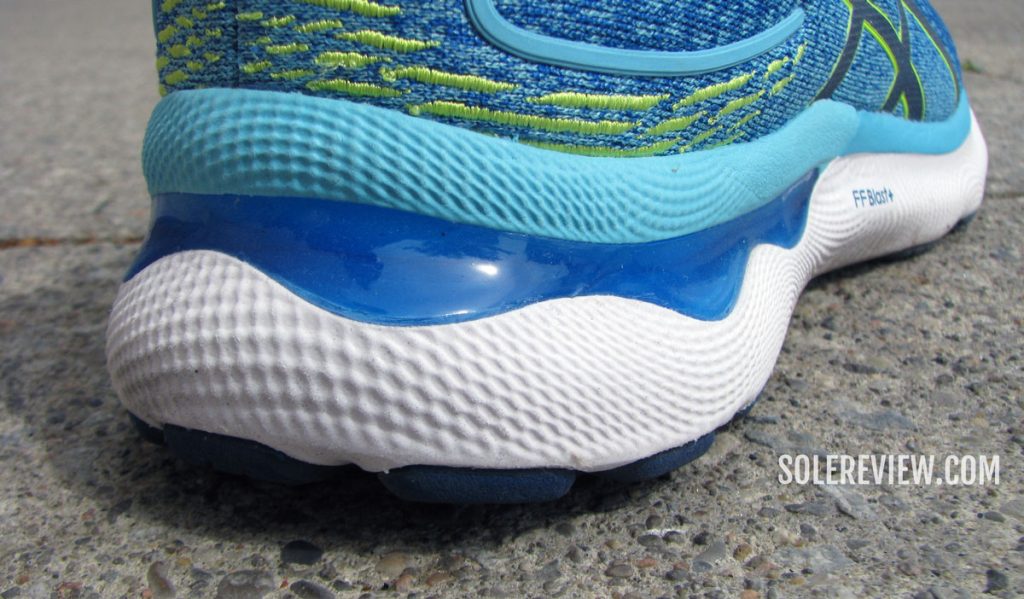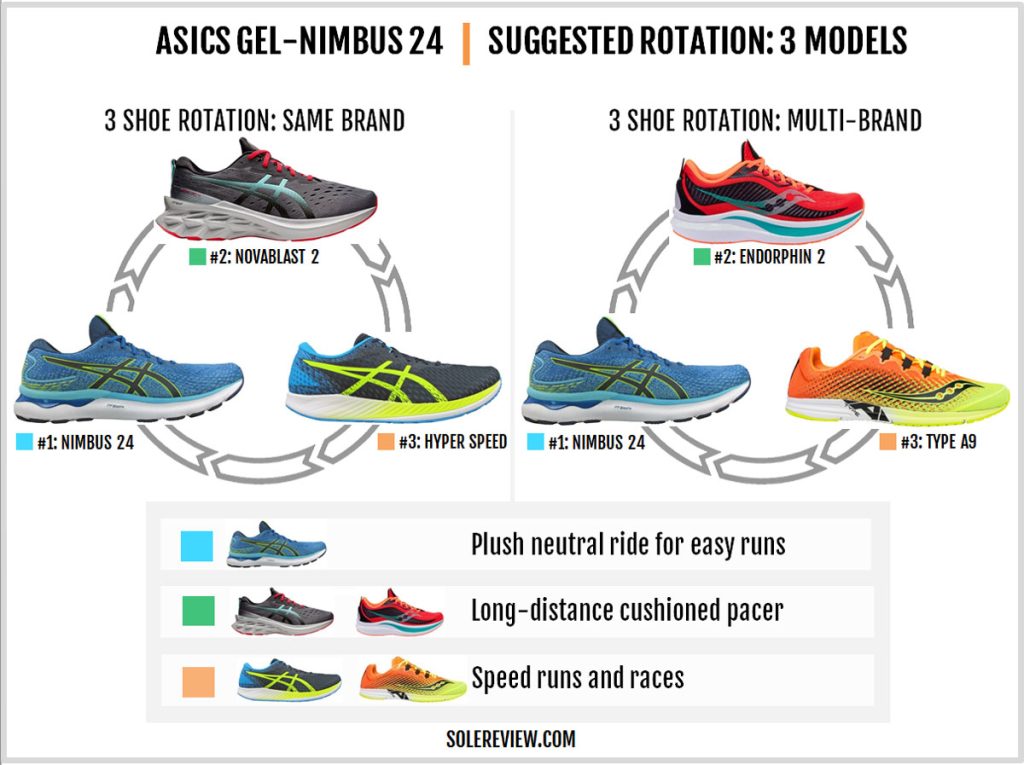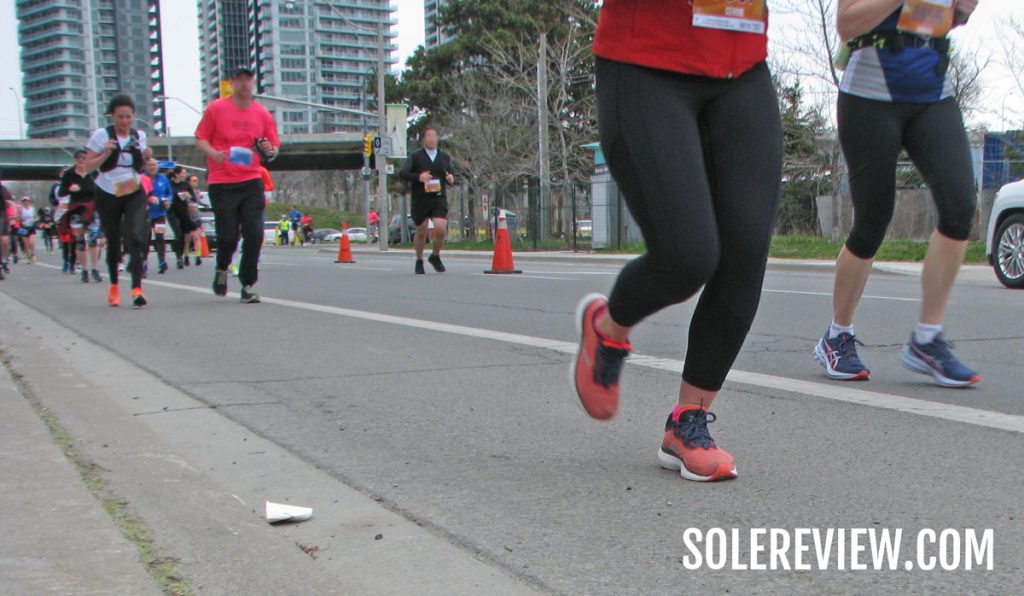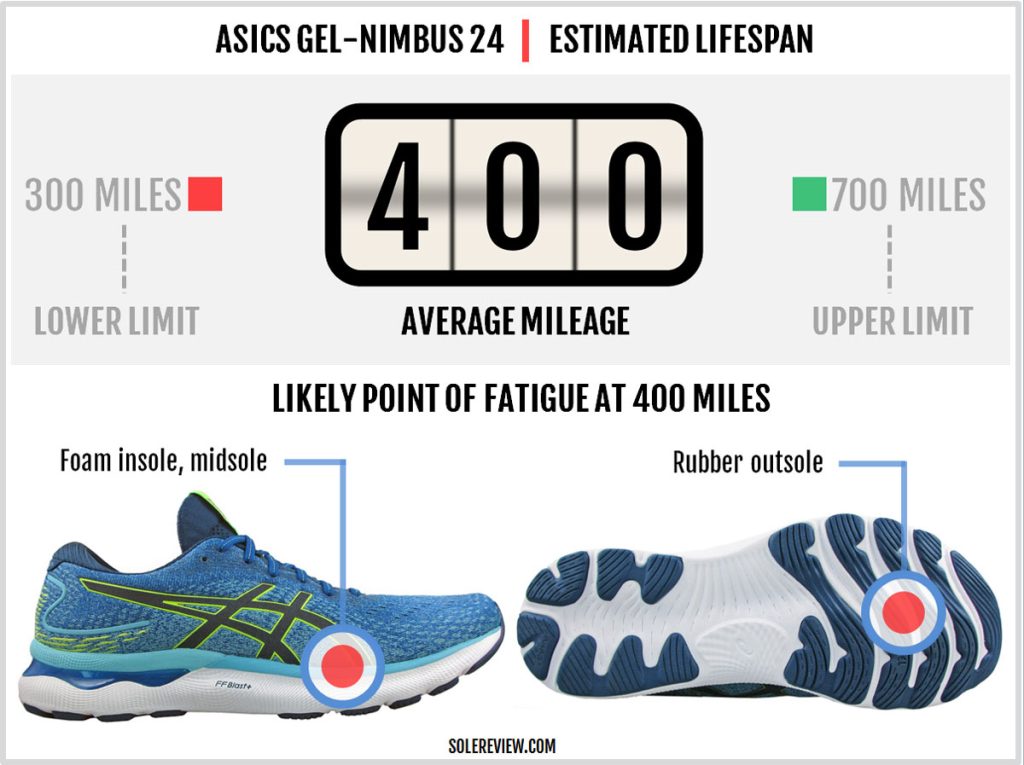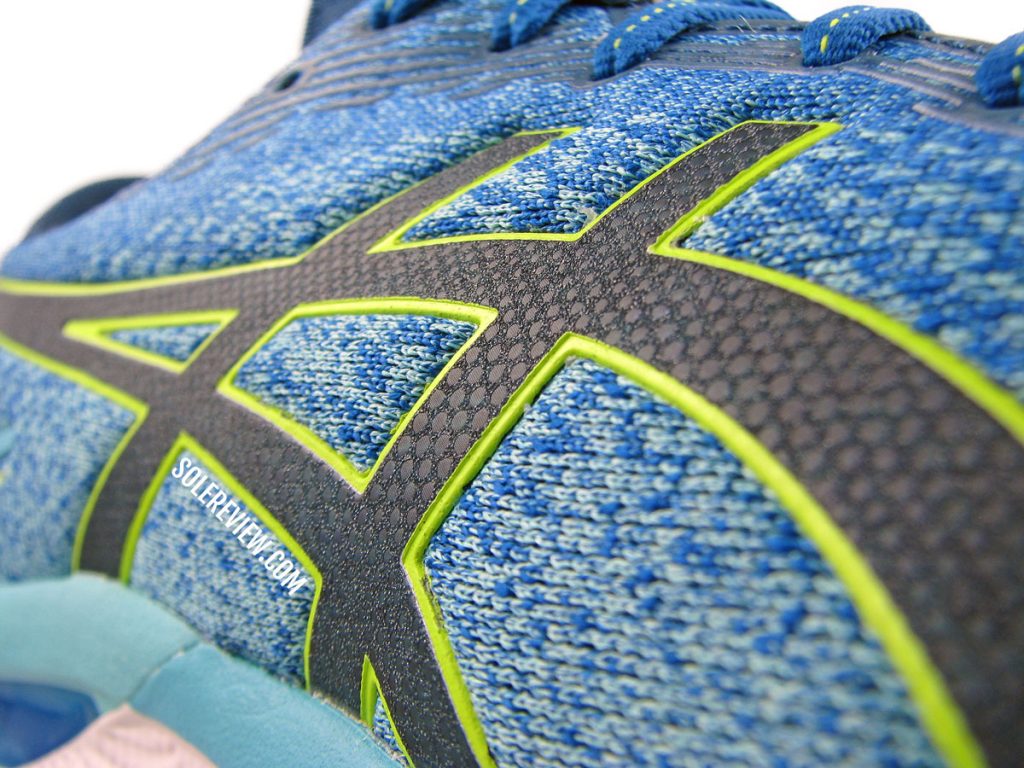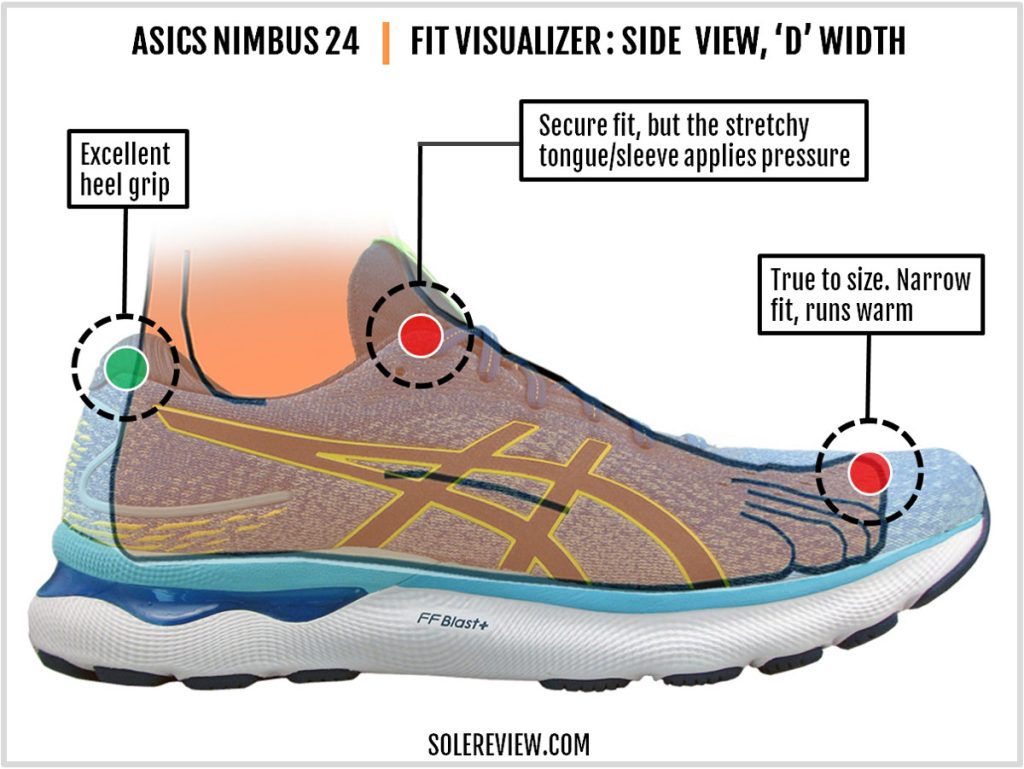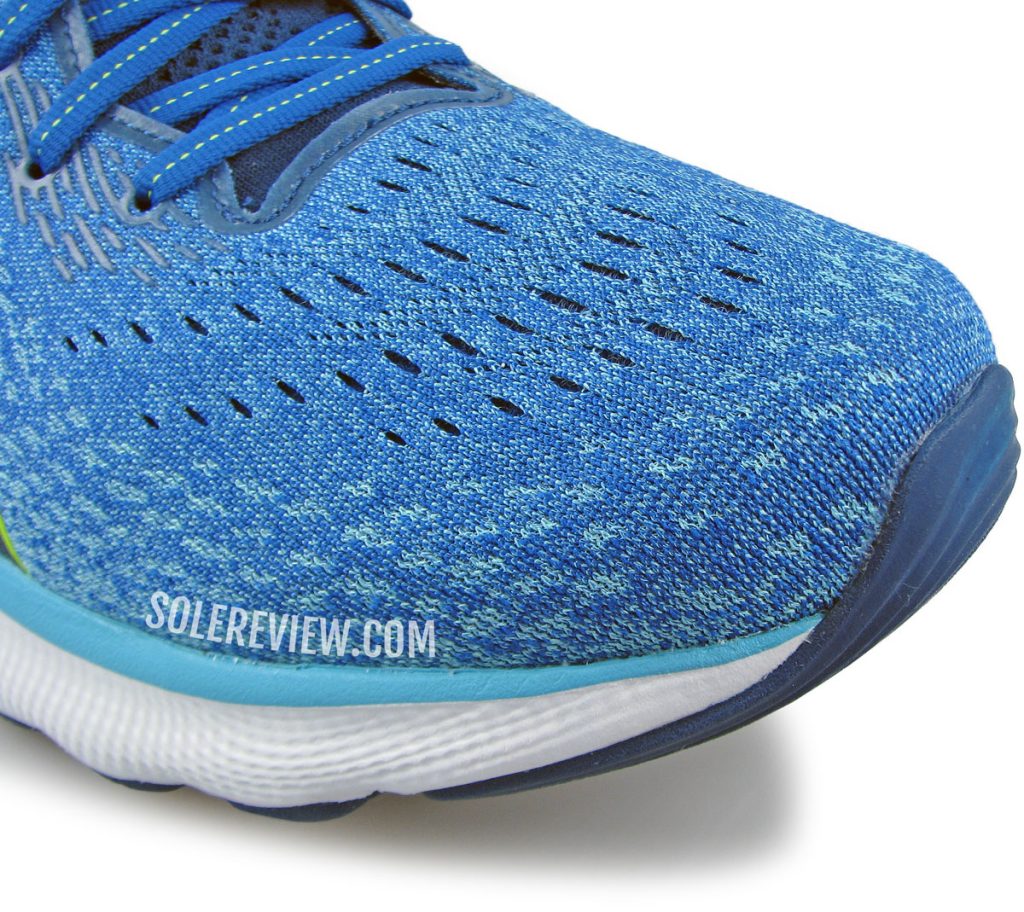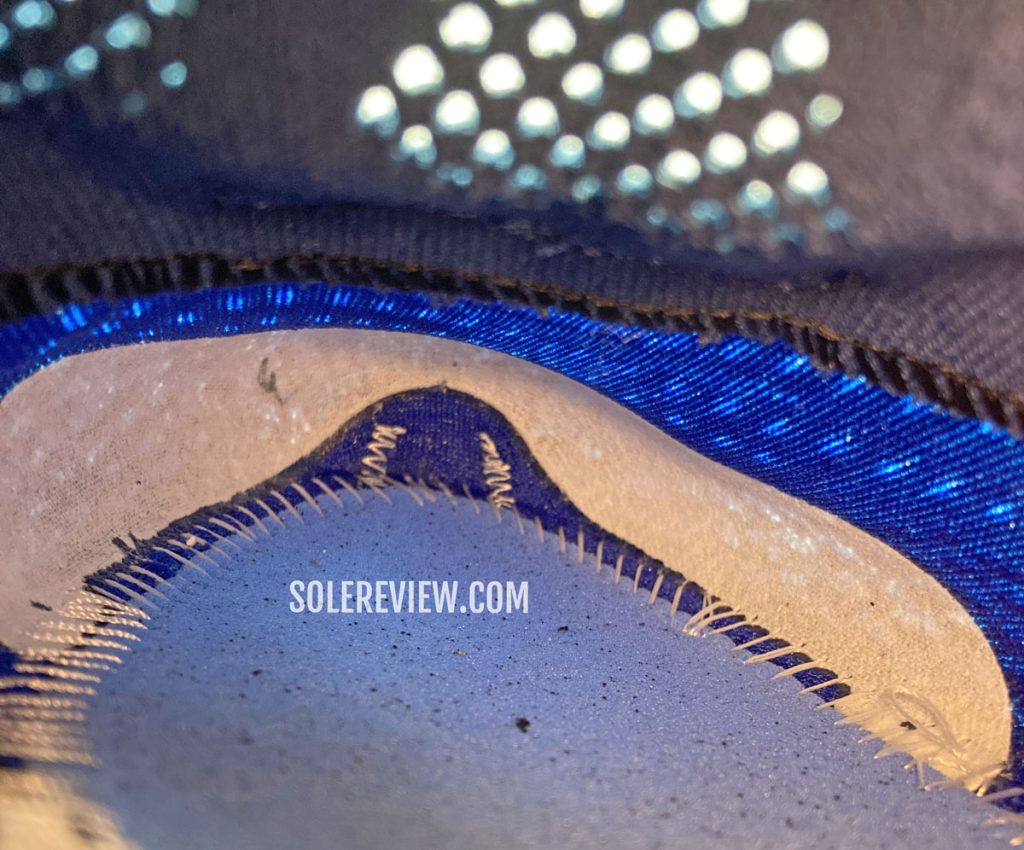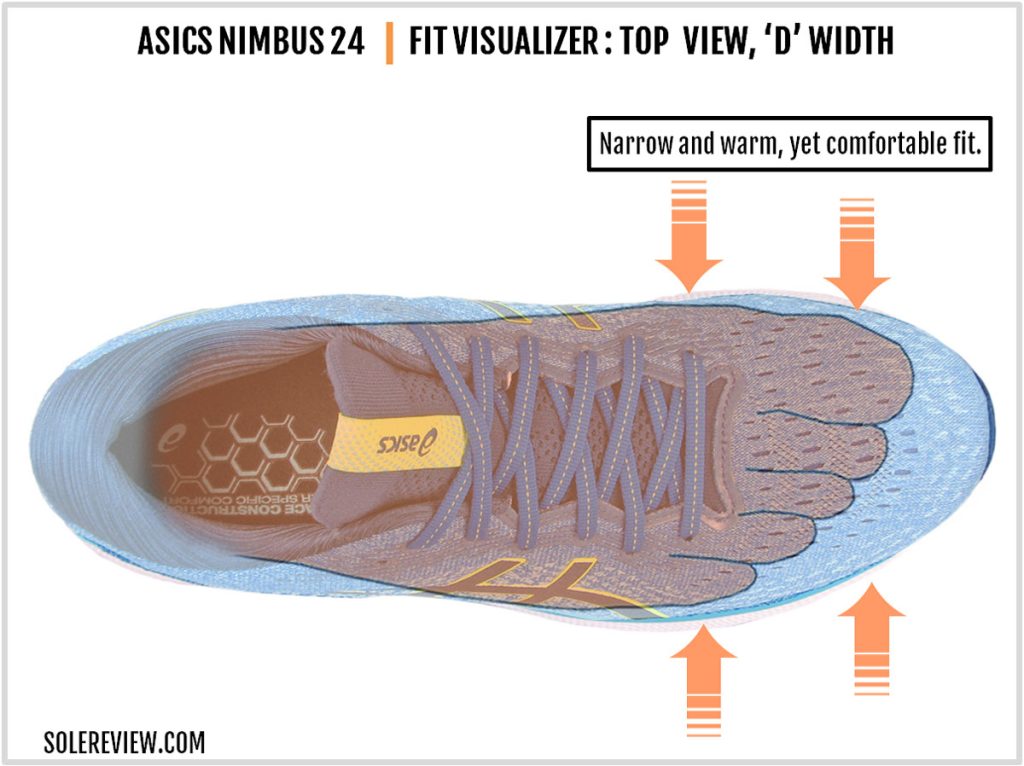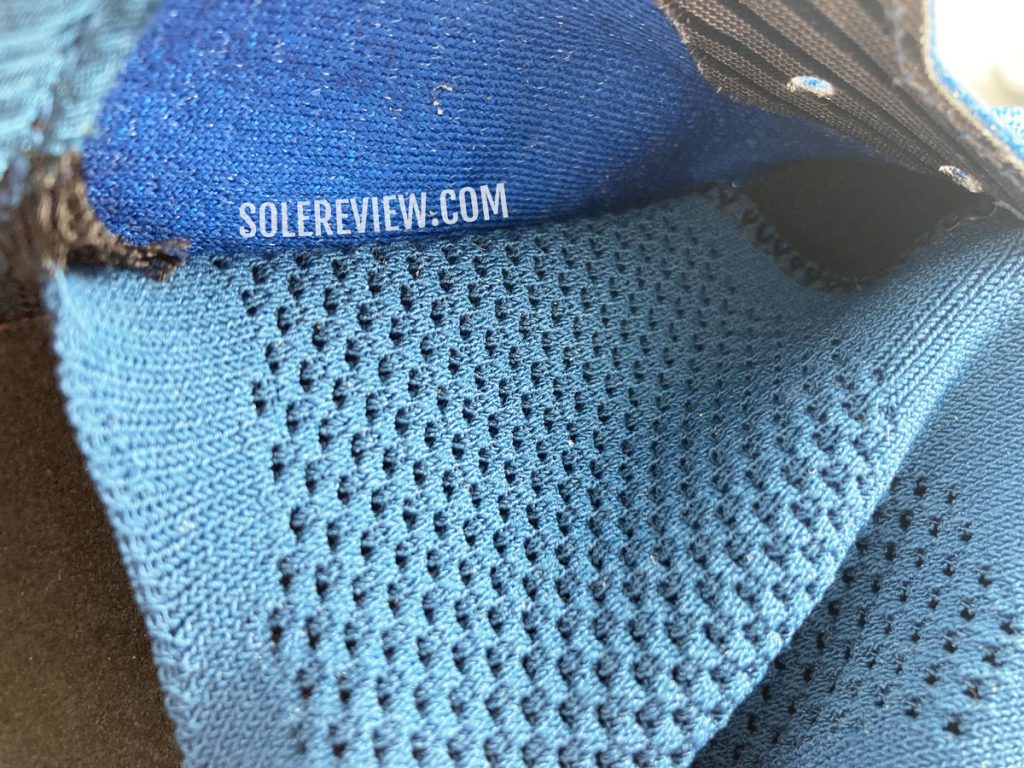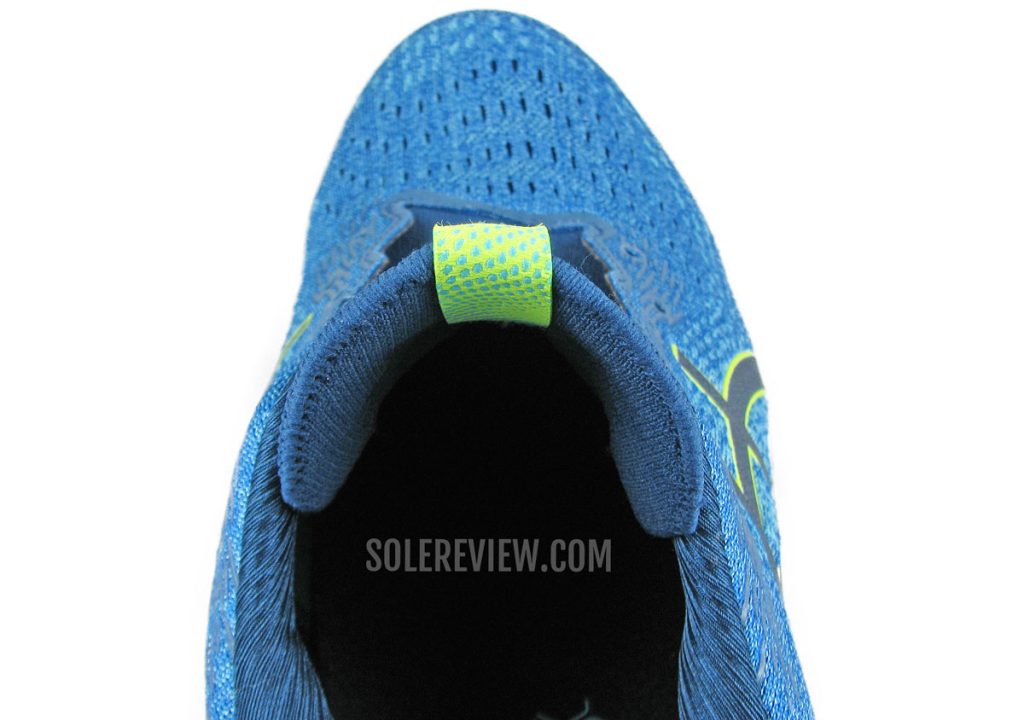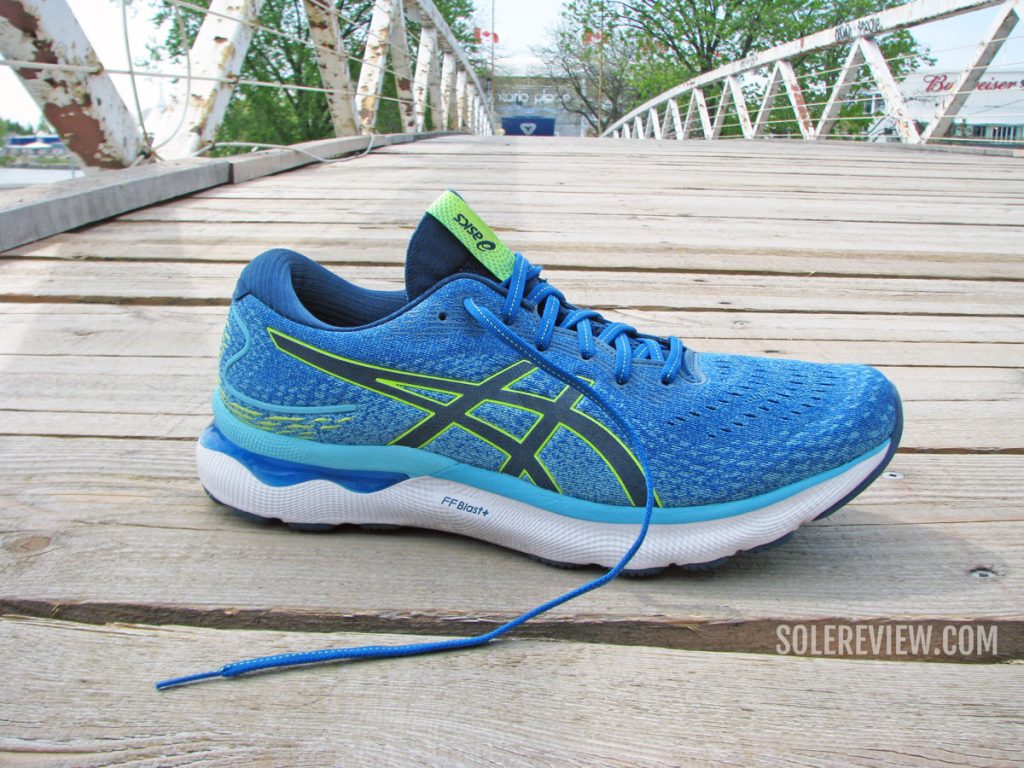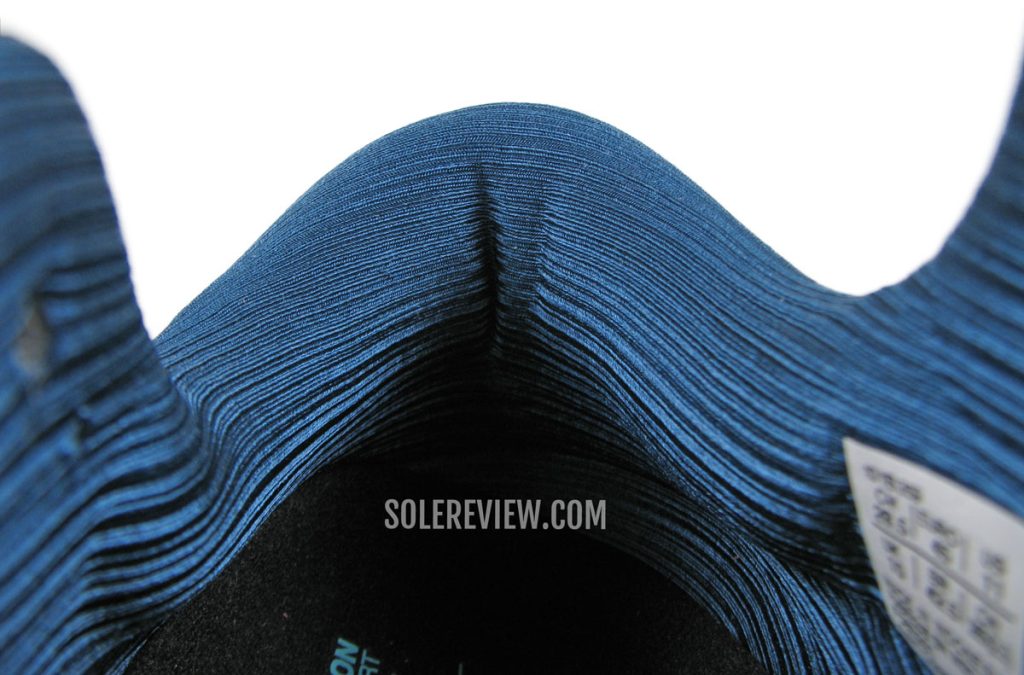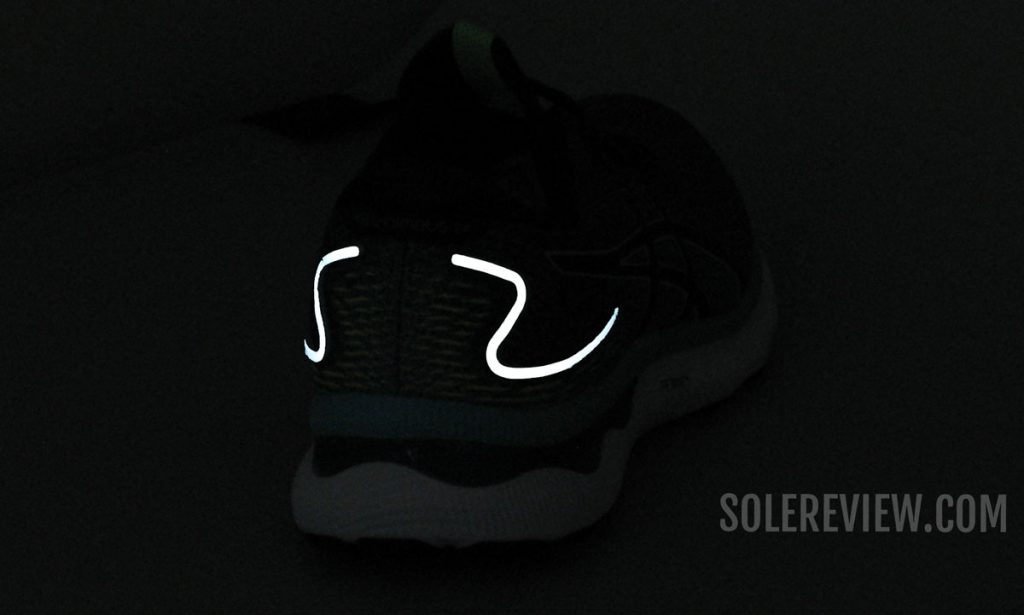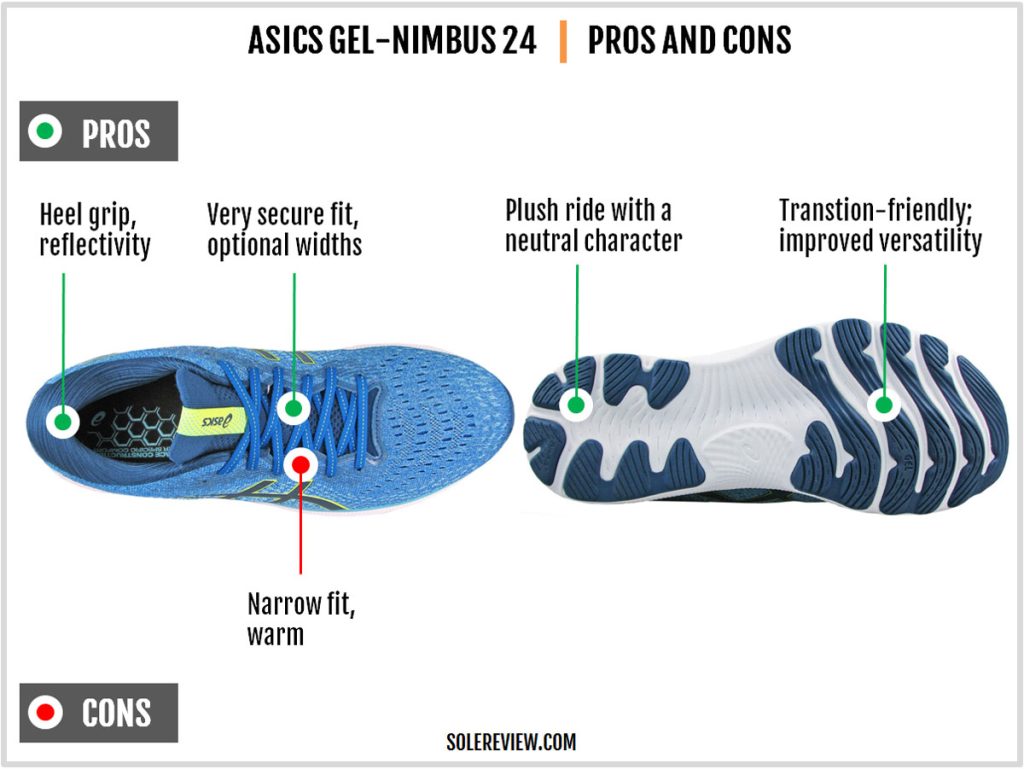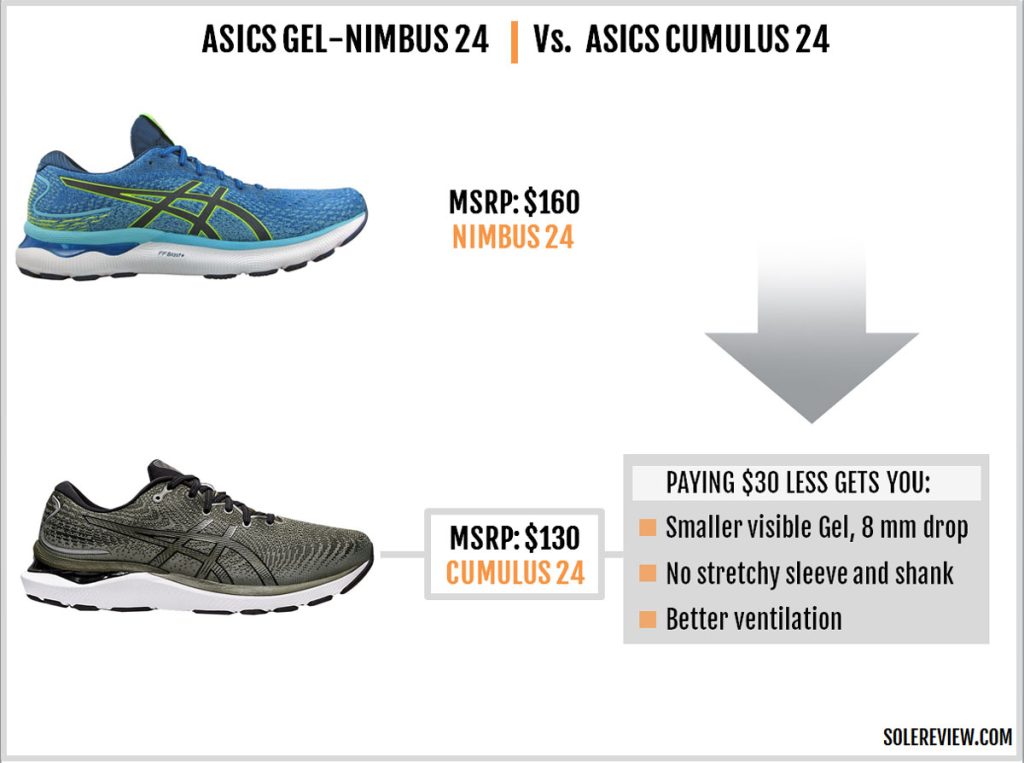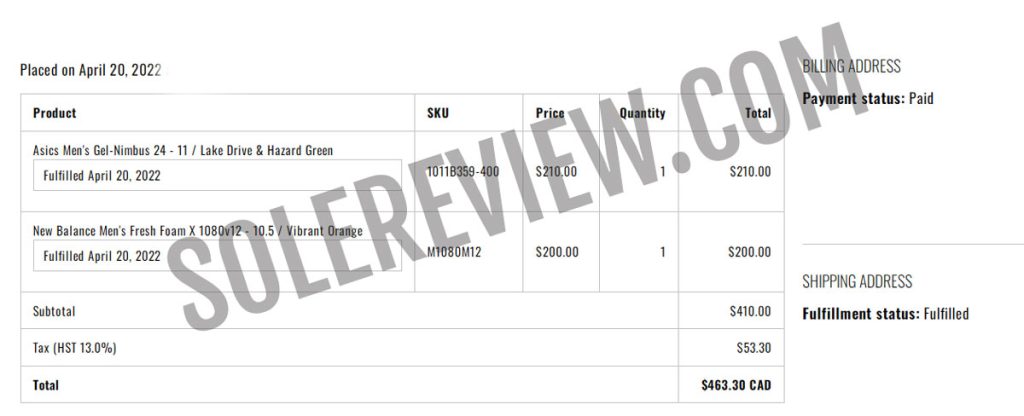
The Asics Nimbus 24 was purchased at full retail price for our review. The amount is in Canadian Dollars.
In this review:
INTRODUCTION
Last year, when we declared the Nimbus 23 to be the best Nimbus ever, we probably jinxed it.
How else can one explain the strange upper of the Nimbus 24? Though it looks familiar from the outside, the interior fit is, to put it mildly, strange. The midfoot and forefoot are much tighter than any Nimbus we’ve tested before.
There’s an ultra-stretchy (think adidas Primeknit or Nike Flyknit) type tongue that also forms the midfoot sleeve. The outer mesh is also thicker than the 23, thus producing a tighter, shorter, and less breathable interior.
Often, shoe brands get into an unhealthy obsession with certain design trends. There’s never a clear rationale backing the design choice, and it usually takes a couple of years for the companies to break out of them. We can think of many examples.
A few years ago, most Saucony shoes had the imperfect ISOFIT lacing system. During 2019-20, Nike got fixated on fitting a racer-like tongue on the Vomero and Pegasus. They have since reverted to a conventional tongue.
And it took New Balance three years to snap out of its origami-type heel phase. That was a time when most New Balance shoes had a molded heel cup with a prominent ‘lip’ that did not add value to the heel grip. If anything, it made the fit worse.
Now, the good folks at Asics seem to have got it into their head that incorporating an elastic knit tongue to a conventional upper is a clever idea. And it’s not just the Nimbus 24 that suffers from this quirk; even the Nimbus Lite 3 swapped its thick tongue for a stretchy sleeve.
With the right design context, an elastic knit tongue adds functional value. Look no further than the adidas Ultraboost 22.
However, the Ultraboost’s stretchy sleeve is integral to the design language, as the entire upper is made of an elastic mesh. The tongue doesn’t feel out of place at all – unlike how it feels on the Nimbus 24 and Nimbus Lite 3.
Also, a stretchy tongue on a non-elastic upper is not an industry best practice.
The New Balance 1080V12 shows us how it’s done – the upper is stretchy, but the tongue is not. The Nike Zoom Fly 4 has a non-stretch upper and elastic tongue, but only the flap is stretchy – the sleeve isn’t. And besides – the Zoom Fly 4 is a road racer, unlike the Nimbus 24.
That was our little rant on the upper design. Now, on to the good news.
We like the new midsole a lot. The updated cushioning material and midsole geometry (more on that in the following section) produce a satisfying blend of cushioning softness and transition-friendly road manners.
With its changed ride character, the Nimbus 24 is more versatile for different use cases. However, our ideal Nimbus would have the upper of the 23 and the midsole of the 24.
Finally, an update on the price. As the result of a $10 increase, the Nimbus 24 is now back to being a $160 shoe. We say ‘back’, because this model’s original retail was $160 four years ago. In 2019, the Nimbus 21 dropped its price by $10 to become a $150 shoe.
THE MIDSOLE DESIGN AND RIDE EXPERIENCE
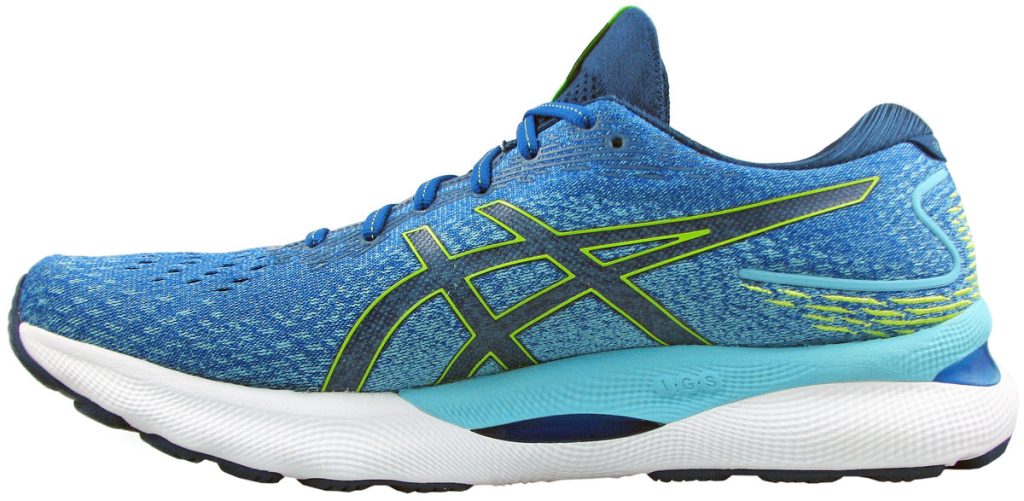
The midsole gets a new Flytefoam Blast Plus core and concealed midfoot shank (Trusstic) that extends towards the forefoot.
Sure, the redesigned midsole is made of the peppier Flytefoam Blast Plus instead of the Flytefoam variant that Nimbus 23 used. The Nimbus 24’s midfoot shank (Trusstic) also vanishes from the outsole and re-appears closer to the upper.
But the Nimbus 24 feels noticeably more agile than the 23, and it can’t be just the foam. After all, the new FF Blast+ is softer than the 23’s foam. So what exactly alters the ride character?
One only gets a glimpse of the repositioned shank on the inner midsole, but this plastic component seems to extend further towards the forefoot.
Though the forefoot is fairly flexible under the ball of the foot, the midsole suddenly turns stiff from where the printed Asics logo begins.
Our tear-down should reveal the inner workings of the midsole, but we’re pretty certain that the stiff ‘Trusstic’ shank is longer than it appears.
Thus, it is the newly-acquired stiffness, and not the foam that has the most impact on the ride character of the Nimbus. Besides the shank, the tighter upper also plays a role. A snugger upper pins the foot down over the foam for a higher level of ground feel.
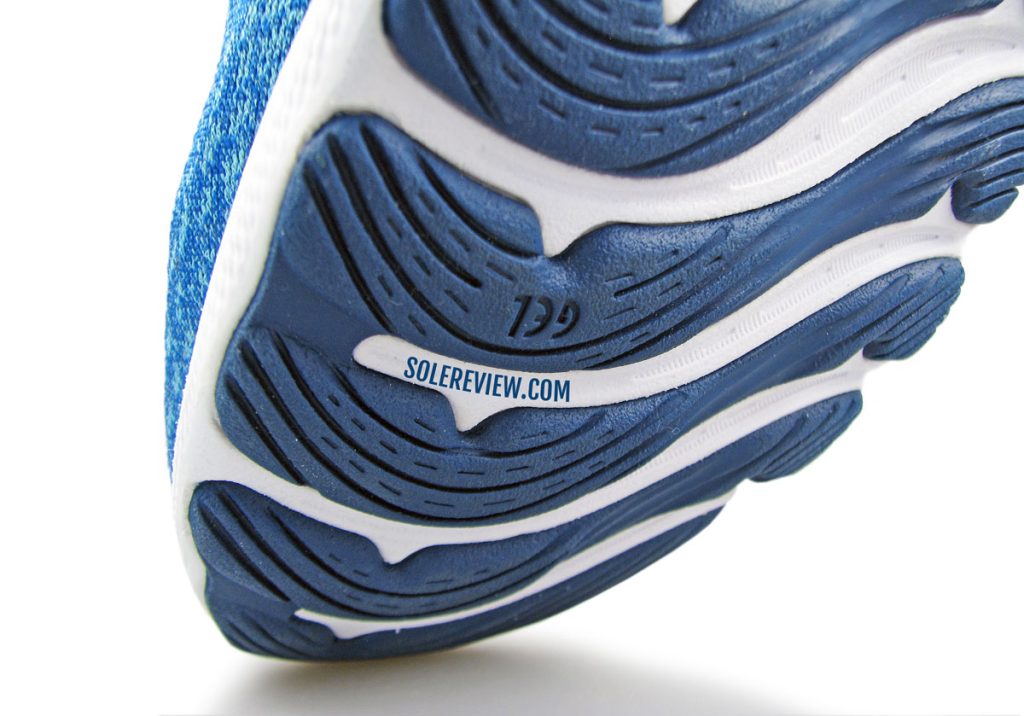
The soft forefoot isn’t as flexible as the Nimbus 23, but feels faster due to the redesigned midsole. The pictured outsole is made of pliable blown rubber.
Thus, it is the combination of the stiffer midfoot/forefoot and narrow fit that makes the Nimbus a faster neutral trainer. It’s also worth underscoring that the forefoot stack is a mere 16 mm – versus the 26 mm rearfoot. With a thinner midsole, there’s less material to go through.
By fast, we don’t mean racing flat fast – but in a sense that’s relative to the cushier 23. More like a respectable 5 min/km (8 min/mile) pace than speeds faster than 4:30 min/km or 7 min/mile.
Forefoot transitions have a quicker feel than the 23, as the foot doesn’t have to labor through the midsole softness. We mean, the midsole is soft – more so than the 23. However, the re-positioned shank and tighter upper makes the loading process more efficient.
Else, not much has changed on the outsole. Except for minor tweaks on the surface texture, the placement of the rubber lugs is almost identical to the 23. Larger strips of (soft) blown rubber cover the forefoot, and they offer good, if not great, traction. The wide channels help make the midsole flexible.
Only the two lugs under the edge of the heel are made of hard rubber; the rest of the outsole uses softer rubber. The heel crash pad is generously articulated to make the rearfoot landings smooth.
On a related note, Asics should have filled the midfoot gap when they removed the plastic shank.
There is a few millimeters of clearance, so the loading process could have been smoother if the foam section was flush with the outsole level. Brooks does this very well on the Ghost and Glycerin.
The Nimbus 24’s 10 mm heel-to-toe offset is created by a 26 mm heel stack height. In typical Nimbus fashion, all the multi-density foam business happens in the rear. For all practical purposes, the forefoot midsole is single-density – the penny-sized Gel unit doesn’t count.
The lower layer (in white) is the softer Flytefoam Blast Plus, whereas the blue wedge above the Gel unit is a firmer material. The firmer layer and Gel prevent the foot from sinking into the heel; an occurrence we’ve seen on several Nimbus models in the past.
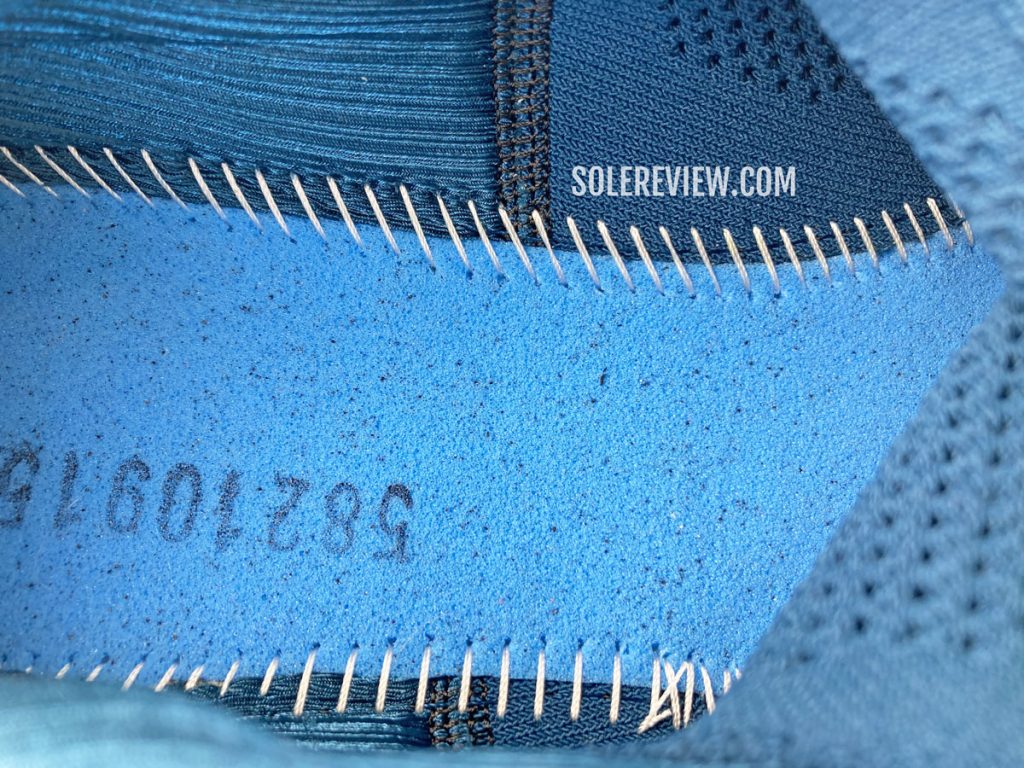
The soft foam lasting is also made of Ortholite. Together, both the layers add step-in comfort just under the foot.
By now, readers will know that the ‘Gel’ only plays a minor part in the effective cushioning. Most of the softness comes from the foam stack, blown foam lasting, and removable Ortholite insole.
Though Asics highlights its ‘3D space construction’ on the insole, the negative space under the heel isn’t very deep.
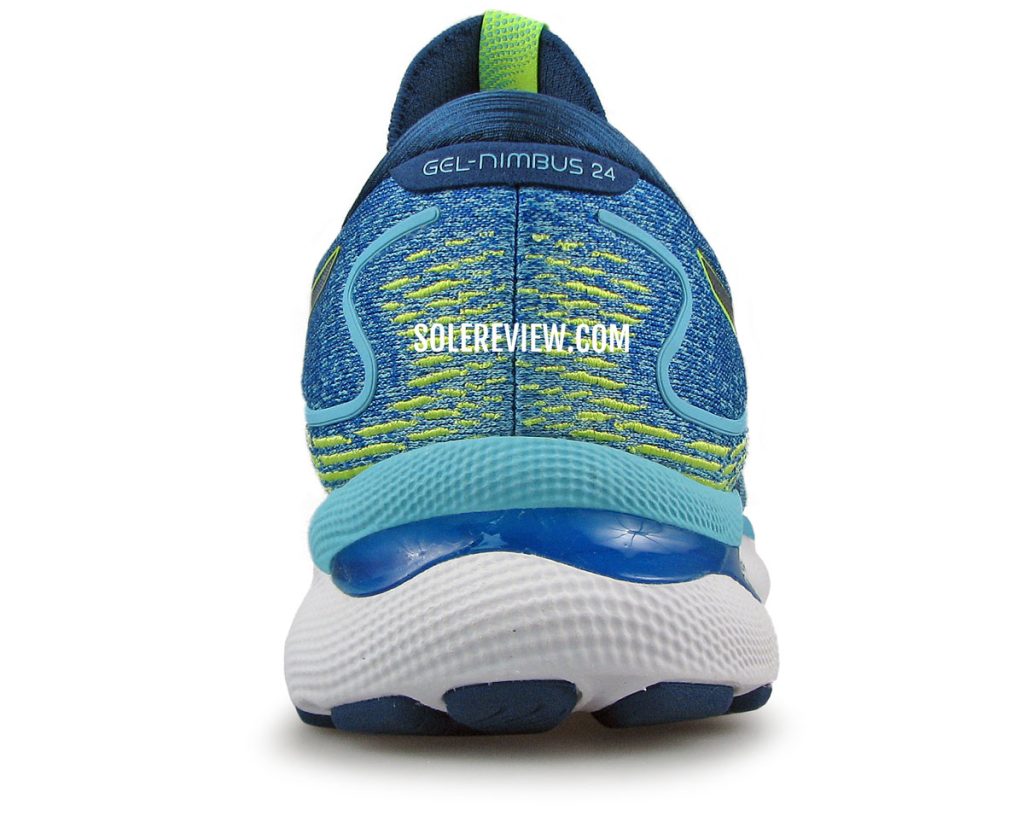
Though the wraparound Gel doesn’t influence the cushioning softness, it acts as a stability feature. It is firmer than both the Flytefoam layers
Asics Gel may not be an important cushioning agent, but it certainly plays a role in the midsole dynamics.
Of all the materials used to create the heel stack, the visible Gel is the firmest. Its wraparound design creates a supportive sidewall that adds to the Nimbus’s neutrality.
The heel bevel is almost non-existent, as the midsole edge is fairly low to the ground. While forefoot striking isn’t a problem per se, it would have felt (more) natural with a higher heel spring.
RECOMMENDED ROTATION
If this review was written before the arrival of new-age marathon racers like the Nike Vaporfly, we would have endorsed the Nimbus as a marathon-worthy running shoe. Today, there are superior alternatives.
We say this because even though the Nimbus 24’s midsole has acquired a peppy feel, it doesn’t change the forefoot thickness. Excluding the insole and lasting, the forefoot is just 16 mm thick. Understandably, there isn’t a lot of cushioning underneath.
The Asics Novablast 2 is a nice marathon shoe due to its higher stack heights ( 30 mm rear, 22 mm forefoot). The rocker profile also promotes faster turnovers, and its upper breathes better than the Nimbus 24.
Rather than spending mega-bucks on the Asics Metaspeed Sky or Nike Vaporfly Next % V2, the Nike Zoom Fly 4 and Saucony Endorphin Speed V2 offer far better value.
For shorter races (5K – 10K) and speed runs, we recommend the Asics Metaracer, Hyper Speed, Nike ZoomX Streakfly, or Saucony Type A9.
IS THE ASICS NIMBUS 24 DURABLE?
The thicker upper mesh with a stretchy knit tongue has a silver lining – it’s more durable than the 23.
It’s highly unlikely for the layered upper to come apart, and the molded logos on the side provide an additional layer of reinforcement.
The midsole and outsole should last around 400 miles on average – or longer depending on user profile, running surface, and weather.
Even though the outsole is made of pliable blown rubber, the isolated strips telescope into the midsole foam to delay the wear and tear process.
THE UPPER DESIGN AND FIT
The Nimbus 24 fits true to size, but with a caveat. It feels as if a half-size short, and that’s due to the thick mesh with a tighter knit.
Unlike the Nimbus 23’s thin and breathable mesh that created an accommodating interior, the redesigned upper creates a narrow fit. The fewer vents on the top and sides of the forefoot also create a paucity of toe-box space.
Despite an internal toe bumper, the ceiling feels low. Again, that is the outcome of using a thick double-layered mesh.
Readers should know that there’s a stark difference between the forefoot and toe-box of the Nimbus 24 and 23. Think of the 2E (wide) sizing of 23 as being equal to the standard D width of the 24.
The updated fit grips the foot like a speed shoe, and pins it down over the foam midsole. The snug fit is one of the other reasons why the V24 has improved ground feel and transition manners.
The ventilation suffers due to the new construction, and the Nimbus 24 feels hot and stuffy during warm-weather runs. The previous model was way better at circulating air than the 24. And it’s not just the thicker exterior at work here, but also the contentious sleeve that forms the tongue.
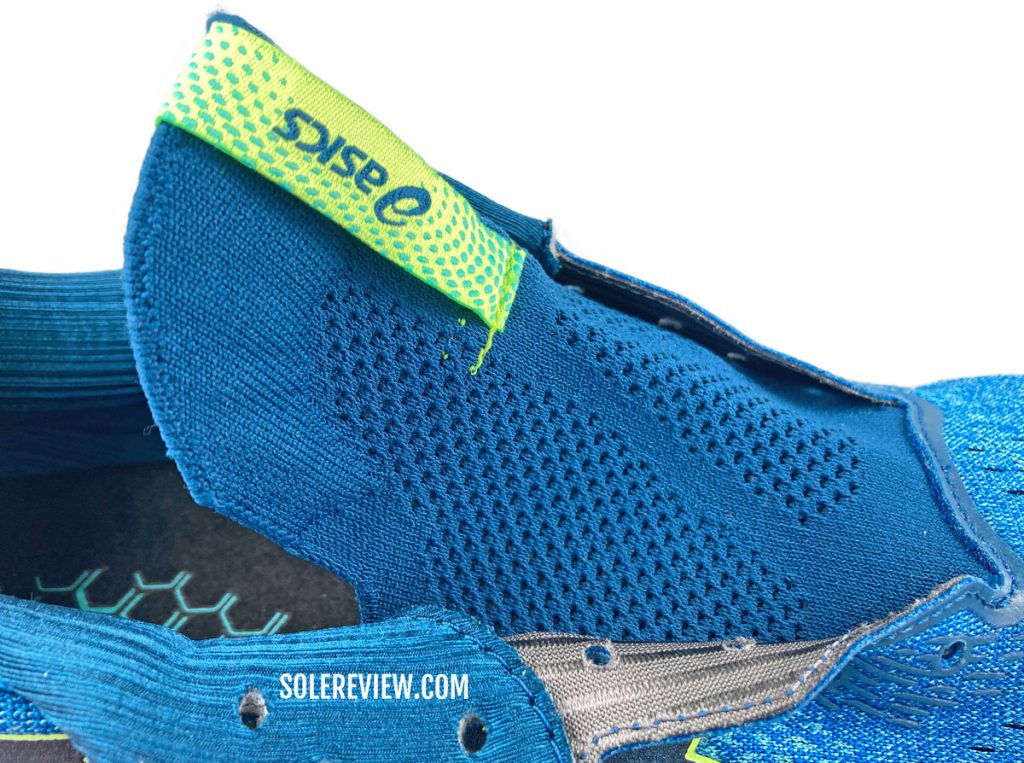
By itself, an elastic knit tongue adds value. But again, context is everything, and this is where the Nimbus 24’s upper falls short.
Even though the fundamentals are in place – like the true-to-size interior with a secure fit, for example – but the minimal tongue creates an odd sensory contrast with the rest of the upper design.
Other cushioned trainers like the adidas Ultraboost have a knitted tongue, but then, the entire upper is based on a similar design with matching mesh behavior. The Nimbus 24 has none of those. The engineered mesh is non-stretchy, and the heel collar is as traditional as it gets.
There are fit-related implications too. The sense of a snug midfoot is very apparent, but then the forefoot feels completely different since this isn’t a full sleeve, but merely a gusset.
The N-24 doesn’t absorb the lacing pressure as well as the 23 did; the tongue has no padding at all.
That being said, we’d like to point out the tightness feels equally distributed around the midfoot. In other words, the pressure from the elastic sleeve is greater than the top-down pressure exerted by the flat, semi-elastic laces.
The tight interior isn’t without its performance upsides.
The fit security is excellent because of the narrow exterior, and generously-padded heel collar. The upper also uses variable width lacing – a design where the distance between the opposing eyelets varies from row to row. This also helps with the midfoot fit.
The rear upper uses a stiff counter with reflective details on the outside. There is even some decorative embroidery thrown in for good measure.
PROS AND CONS
The retooling of the Nimbus 24’s midsole results in a ride character that’s more responsive and speed-friendly than the 23.
This new cushioning behavior doesn’t come at the cost of ride comfort; the multi-density midsole and insole provide adequate mileage-friendly cushioning. If we didn’t make it clear, the new model is more versatile than the shoe that replaces it.
We have mixed feelings about the upper. Though the fit is very secure, it leaves the accommodating and breathable interior of the previous model behind. Optional widths are available, so we recommend buying the 2E (wide) if you want a fit that’s similar to the outgoing model.
The reflectivity coverage has improved over the 23, thus making the Nimbus 24 a better running shoe for low-light conditions.
COMPARISON: THE ASICS NIMBUS 24 VERSUS CUMULUS 24
The Cumulus 24 is akin to a stripped-down Nimbus – a cushioned yet a $30 less expensive neutral trainer with fewer bells and whistles. For example, the Cumulus has a smaller visible Gel unit than the Nimbus, as well as a simpler upper design that doesn’t have the stretchy tongue.
When compared to the Nimbus, the Cumulus has a 2 mm lower rearfoot stack and an 8 mm heel offset.
So except for minor changes on the upper and midsole, the Cumulus 24 offers a similar value proposition as the NImbus 24. Which is, a comfortable neutral trainer that works for many use cases – be it everyday training or long-distance cruising.
SHOES SIMILAR TO THE ASICS NIMBUS 24
Last year, the Asics Nimbus Lite 3 set itself apart from the Nimbus 23 through its peppy ride.
This year, the functional gap between both the Nimbus variants has narrowed, so if you want a simpler ride but a similar level of comfort, the Nimbus Lite 3 is your shoe. The Cumulus 24 is also worth considering – it’s a versatile neutral trainer with plenty of ride comfort.
For $10 less than the Nimbus, the Brooks Glycerin 19 offers a smooth and cushioned ride under a plush and breathable upper. It’s not as ‘fast’ as the Nimbus 24 due to the absence of a midfoot shank, but the single-piece midsole has a higher level of stability.
Another comfortable yet stable alternative is the Nike Vomero 16. The midsole combines a pressurized Zoom Air bag with PEBA-based ZoomX foam to deliver supportive cushioning. Our review of the previous Vomero is relevant, as both the versions share an identical midsole.
The newly-released Nike React Infinity Run 3 is also worth a look, and so is the Saucony Triumph 19 for its firm E-TPU (Pwrrun+ foam) ride.
Do you own this shoe? Improve this review by sharing your insights – submit a review here.

